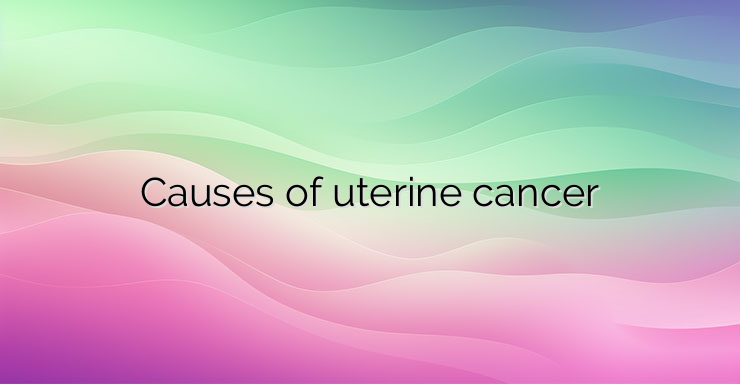A key element in the pathogenesis of endometrial cancer – the inner layer of the uterus – is the proliferation of the cells that make it up, under the influence of estrogen. When unopposed by progesterone, estrogens cause endometrial hyperplasia. This leads to the development of atypical premalignant lesions, which are called endometrial intraepithelial neoplasia. They can transform into endometrial carcinoma, which is characterized by invasion into the stroma or myometrium. In addition, mutations in the PTEN and KRAS2 genes, as well as other changes in the genetic information of the cells, are observed in this carcinoma. Both intraepithelial lesions and carcinoma have estrogen and progesterone receptors on their surface. Carcinoma is usually preceded by the development of preinvasive intraepithelial lesions that progress to invasive tumor entities. They affect the stroma of the endometrium and reach the deep layers of the myometrium. In this way, they also reach the lymphatic system, which ensures the spread of metastases to the regional lymph nodes. Metastases can also reach the lower parts of the uterus, as well as the cervix, fallopian tubes and ovaries. Locally advancing carcinoma may completely invade the myometrium, reach the serosal surface, and involve the peritoneum and other tissues in the pelvis. Type 1 endometrial carcinoma usually remains localized to the uterus and is characterized by a better prognosis. Type 2 carcinoma and other carcinomas with mutations in the TP53 gene often metastasize through the lymphatic system and reach the fallopian tubes. The process then progresses to the pelvis and abdominal cavity, which is associated with a worse prognosis. The development of the most common types of endometrial cancer and their intraepithelial precursors depends on the hormonal balance and stimulation of the endometrium. The presence of estrogen-secreting tumors, as well as ovarian tumors or polycystic ovary syndrome, leads to disturbances in ovulation and the menstrual cycle. This leads to an increase in the free fraction of estrogens, which causes hyperplasia in the endometrium. Lack of ovulation – anovulation, early menstruation or late menopause are associated with increased exposure of the endometrium to the action of estrogens, which increases the risk of developing endometrial carcinoma. Other reasons for the development of the disease can be a high body mass index, insulin resistance, type 2 diabetes, infertility, as well as lack of menstruation – amenorrhea. Obesity and hyperinsulinemia lead to decreased levels of sex hormone-binding globulin. This causes an increase in the free fraction of estrogen. Precursors of male sex hormones, which are formed in polycystic ovaries, hypertrophy of cells in the ovarian hilus or the cortex of the adrenal gland, are converted into estrogens in adipose tissue.High amounts of subcutaneous fat favor the conversion of androgens into estrogens. The negative feedback that high levels of estrogens lead to affects the hypothalamus and causes disorders in the release of luteinizing hormone – LH and follicle stimulating hormone – FSH. It also changes ovulatory cycles. Ovarian follicles continue to grow and produce estrogens and male sex hormone precursors. In this way, the possibilities for the growth of the endometrium are exhausted in the absence of progesterone, which would ensure its maturation or natural separation with menstruation when fertilization has not taken place. High levels of estrogens are also observed in the postmenopausal period when androgens produced by the ovaries and adrenal cortex are converted to estrogens in adipose tissue. This leads to overstimulation and growth of the endometrium, which progresses to hyperplasia. References: https://www.ncbi.nlm.nih.gov/books/NBK525981/


Leave a Reply